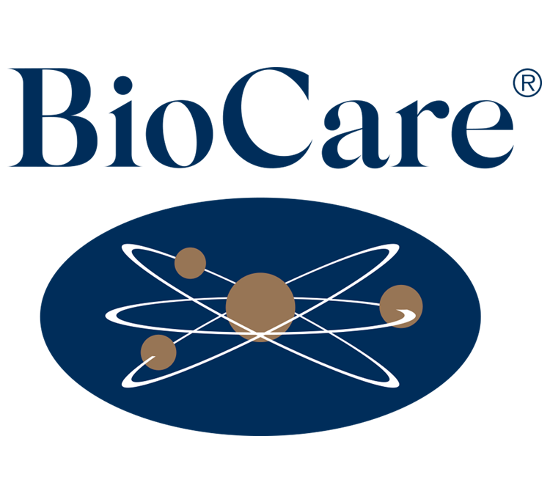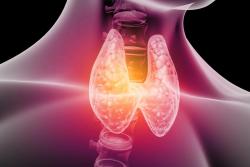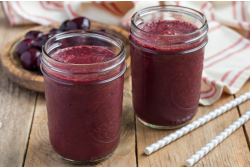Dysbiosis – How to restore gut ecology to achieve balance
Dysbiosis is a familiar concept for most of us. However, we may still be inclined to think about pathogens as the villains, and us as the victims, tempting us to embark on a journey of “eradication”. But is this a holistic approach? Does that approach encourage a robust and resilient gut ecosystem? There are cases where pathogens are perilous and eradication is required, but more often than not, we are talking about a state of dysbiosis, created by a disruption to gut ecology. Assessing the whole person by considering all the complex contributing factors and restoring that ecology offers a wider and likely more effective approach to addressing dysbiosis.
What is dysbiosis?
Dysbiosis is a state of an imbalance in the gut microbiome, characterised by a proliferation of pathobionts and pathogens, accompanied by compromised levels of beneficial bacteria.1 Symptoms of dysbiosis include bloating, disrupted bowel movements, abdominal pain,2 anomalous joint pains, brain fog, food sensitivity, allergies, and inflammation.3 Some other seemingly unrelated symptoms can also be linked with dysbiosis e.g., headaches, palpitations, insomnia, exertional fatigue, photophobia, and dizziness.4,5 Dysbiosis has been directly linked with a number of disorders including IBS, IBD, SIBO,6–8 fatigue, and autoimmune conditions.9 Dysbiosis caused by an infection or antibiotic use, often results in infectious diarrhoea (also known as gastroenteritis). In all cases, the state of dysbiosis leaves the gut much more vulnerable to external pathogens (as found in contaminated food, for example), easily overwhelming the immune responses and leading to symptoms of varying severity, from diarrhoea to sepsis.
Dysbiosis – What’s Causing It?
There is rarely one single ‘root cause’ to dysbiosis and putting the pieces of the puzzle together can provide us with a more comprehensive picture. So, what can drive dysbiosis?
Types of Dysbiosis
The most common pathogenic bacteria associated with dysbiosis include Yersinia, Salmonella, pathogenic forms of E. coli, Fusobacterium nucleatum,32 Proteus mirabilis,33 Citrobacter, Salmonella,34 and Clostridium difficile.35
Small Intestinal Bacterial Overgrowth (SIBO) is the presence of an abnormally high number and/or abnormal type of microorganisms in the small intestine. This includes Streptococci, Escherichia coli and Klebsiella,36 which are usually found in the large intestine. The symptoms of SIBO include diarrhoea, flatulence, and upper abdominal pain and distension. Prolonged SIBO may interfere with digestion and absorption of food, increasing the risk of vitamin and mineral deficiencies. It may even lead to damage and hyperpermeability of the gut lining.37 SIBO is also associated with a number of conditions such as IBS,38,39 acne rosacea40,41 and diabetes.42
SIBO is an increasingly popular diagnosis these days, however the testing methods used often result in either false-positives or false-negatives,43,44 and arguably, can narrow our view. Unfortunately, in the past, there’s been an exaggerated focus on the overgrowth of microorganisms and an overreliance on antimicrobial supplements, antibiotics, and a low FODMAP diet. However, whilst SIBO can very much be a problem for a person, it is merely a marker, an end result, accompanied by wider digestive dysfunction such as low stomach acid secretion, slow motility, colonic dysbiosis, or decreased secretion of digestive enzymes. Candida albicans is an opportunistic yeast, which, if allowed to proliferate, can contribute to a range of issues, from IBS-symptoms to brain fog and mental health issues. Whilst we know high sugar diet contributes to Candida overgrowth, we now acknowledge that adopting a strict low sugar and yeast diet is not the sole and best answer to the problem. Most individuals have some amount of Candida growing in their gut, but the numbers are kept in check by a robust immune system.45 Compromised immunity can lead to Candida evolving into the more aggressive mycelial form, hijacking nutrient supplies, and establishing more dominance over the beneficial microbiota.45,46,47
Parasitic infections are another major cause of dysbiosis, driven by consumption of contaminated food and water (including undercooked meat and fish, or leafy vegetables), travelling to developing tropical countries, poor hygiene, and regular exposure to small children, animals, and hospitals. Commonly identified parasites include Blastocystis hominis,48 Dientameoba fragilis,49 Cryptosporidium, Giardia, Entamoeba histolytica,50 and Schistosoma (water-borne flatworms or blood flukes).The symptomatology significantly overlaps with other types of dysbiosis (e.g., fatigue, bloating, brain fog), but abdominal pain, acute or chronic diarrhoea, and anal itching are particularly diagnostic of parasitic infections.51 Skin rashes, such as urticaria (hives),52 weight loss or difficulty gaining weight, and food sensitivities can also be experienced. However, not all parasites are bad, as is the case with the Blastocystis hominis which has been associated with a reduced risk of GI disease.53 There are in fact many different genotypes of this parasite, some pathogenic and some not, so appropriate testing is required to ensure that we’re not treating something that may in fact be a healthy resident of the microbiome.54
Restoring the Gut Microbiome Balance
The gut is an interlinked system; the examples above have illustrated that there is no single root cause, or a single microorganism behind dysbiosis, but rather a dysfunctional internal environment which allows the microbe to replicate, evolve, and sometimes take over.
So how do we restore the balance and create an environment that favours beneficial microorganisms whilst being hospitable to pathogens?
When to be specific – Therapeutic Diets and Antimicrobial Agents
In cases of multiple and severe chronic issues, stubborn or pathogenic infections, or where approaches to support digestion & microbiome have not resulted in significant improvements, you may resort to using a more targeted approach; specific diets (e.g. Specific Carbohydrate or low FODMAP diets), or antimicrobial supplements. However, in most cases, these should be utilised short-term, and always alongside interventions that positively modulate the gut ecology.
When opting for antimicrobial botanicals, using a combination of ingredients may be more effective than single ingredients, and may reduce the likelihood of the microbes developing resistance. Botanicals such as clove,71 thyme,72 oregano,73,74 and barbery bark75,76 have broad anti-bacterial, anti-fungal, and anti-parasitic properties, and also inhibit biofilm formation.77 Natural antimicrobials can also confer protection when travelling abroad, and they can be paired up with probiotics for increased efficacy. Freeze-dried oils, for example oregano oil, offer far more potency, but can also reduce irritation to the mucous membranes and promote absorption for systemic support, therefore helpful for respiratory, or other infections. The table below lists some of the most versatile and effective antimicrobial botanicals.
Natural Antimicrobials
All of the below have a range of antimicrobial properties against a lot of common pathogens including Salmonella, Staphylococcus aureus, Candida species, Escherichia coli, Clostridium difficile, Proteus mirabilis, Bacillus cereus, Entamoeba hartmanni, Endolimax nana, Blastocystis hominis, Listeria, Campylobacter jejuni, Klebsiella pneumoniae, Fusobacterium nucleatum, H. pylori, Toxoplasma gondii, Schistosoma spp. etc.
| Oregano | Contains carvacrol which is antifungal, antibacterial and antiparasitic. Reduces biofilm formation |
|---|---|
| Clove | Contains eugenol and tannins which have broad-spectrum activity against pathogenic yeasts and bacteria. Reduces production of mycotoxins. |
| Garlic | Antiviral, antibacterial, and antifungal. Garlic does not exert a negative effect on beneficial probiotic bacteria. |
| Cinnamon | Both cinnamaldehyde and cinnamon oil vapours have potent antifungal and antibacterial properties. |
| Caprylic Acid | Particularly good for fungal infection. Also, mildly anti-inflammatory. Naturally found in coconut oil and dairy products. |
| Grapeseed | Contains antimicrobial and antioxidant compounds such as resveratrol, tannins and polyphenols. |
| Olive Leaf | A source of polyphenols such as oleuropein and hydroxytyrosol that have antiviral, antibacterial, anti-inflammatory, and heart-supporting properties. |
| Barberry Bark | Contains a range of plant chemicals, including berberine which is antimicrobial including parasites, and also supports immunity, cholesterol balance, and blood sugar regulation. |
| Thyme | Contains thymol which has potent antibacterial activity and is also useful to support respiratory tract infections (inc. influenza). Reduces biofilm formation. |
| Wormwood | Components a- & b- thujone, artemisinins, and a-santonin provide antimicrobial effects. Really good for parasites. Chamazulene provides antioxidant and anti-inflammatory effects. |
| Grapefruit | The antimicrobial activity is down to the active ingredients D-Limonene, flavonoids and phenolic compounds. |
Our gut ecology is more than a simple black and white canvas. It is an ever-evolving environment, continuously being affected by other systems whilst affecting them at the same time. In essence, there’s much that we don’t know about the specifics of the gut ecosystem, and, while we should always be interested in specific details and mechanisms, we must also zoom out and consider the interconnections between all these systems.
References
1. Monira S, Alam NH, Suau A, et al. Time course of bacterial diversity in stool samples of malnourished children with cholera receiving treatment. J Pediatr Gastroenterol Nutr. 2009;48(5):571-578. doi:10.1097/MPG.0B013E3181831867
v2. Wei L, Singh R, Ro S, Ghoshal UC. Gut microbiota dysbiosis in functional gastrointestinal disorders: Underpinning the symptoms and pathophysiology. JGH Open. 2021;5(9):976. doi:10.1002/JGH3.12528
3. Caminero A, Meisel M, Jabri B, Verdu EF. Mechanisms by which gut microorganisms influence food sensitivities. Nat Rev Gastroenterol Hepatol. 2019;16(1):7. doi:10.1038/S41575-018-0064-Z
4. Tang Y, Liu S, Shu H, Yanagisawa L, Tao F. Gut microbiota dysbiosis enhances migraine-like pain via TNFα upregulation. Mol Neurobiol. 2020;57(1):461. doi:10.1007/S12035-019-01721-7
5. Gawałko M, Agbaedeng TA, Saljic A, et al. Gut microbiota, dysbiosis and atrial fibrillation. Arrhythmogenic mechanisms and potential clinical implications. Cardiovasc Res. 2022;118(11):2415. doi:10.1093/CVR/CVAB292
6. Chey W, Menees S. The gut microbiome and irritable bowel syndrome. F1000Res. 2018;7. doi:10.12688/F1000RESEARCH.14592.1
7. Fjeldheim Dale H, Arslan Lied G. Gut microbiota and therapeutic approaches for dysbiosis in irritable bowel syndrome: recent developments and future perspectives. Turk J Med Sci. 2020;50(7):1632. doi:10.3906/SAG-2002-57
8. Casén C, Vebø HC, Sekelja M, et al. Deviations in human gut microbiota: a novel diagnostic test for determining dysbiosis in patients with IBS or IBD. Aliment Pharmacol Ther. 2015;42(1):71. doi:10.1111/APT.13236
9. de Oliveira GLV, Leite AZ, Higuchi BS, Gonzaga MI, Mariano VS. Intestinal dysbiosis and probiotic applications in autoimmune diseases. Immunology. 2017;152(1):1. doi:10.1111/IMM.12765
10. Compare D, Pica L, Rocco A, et al. Effects of long-term PPI treatment on producing bowel symptoms and SIBO. Eur J Clin Invest. 2011;41(4):380-386. doi:10.1111/J.1365-2362.2010.02419.X
11. Ridlon JM, Kang DJ, Hylemon PB, Bajaj JS. Bile Acids and the Gut Microbiome. Curr Opin Gastroenterol. 2014;30(3):332. doi:10.1097/MOG.0000000000000057
12. Khaustova SA, Shkurnikov MU, Tonevitsky AG. Short highly intense exercise causes changes in salivary concentrations of hydrocortisone and secretory IgA. Bull Exp Biol Med. 2010;149(5):635-639. doi:10.1007/S10517-010-1012-2
13. Desai MS, Seekatz AM, Koropatkin NM, et al. A Dietary Fiber-Deprived Gut Microbiota Degrades the Colonic Mucus Barrier and Enhances Pathogen Susceptibility. Cell. 2016;167(5):1339–1353.e21. doi:10.1016/j.cell.2016.10.043
14. Juge N. Microbial adhesins to gastrointestinal mucus. Trends Microbiol. 2012;20(1):30-39. doi:10.1016/J.TIM.2011.10.001
15. Hurd EA, Holmén JM, Hansson GC, Domino SE. Gastrointestinal Mucins of Fut2-Null Mice Lack Terminal Fucosylation without Affecting Colonization by Candida albicans. Glycobiology. 2005;15(10):1002. doi:10.1093/GLYCOB/CWI089
16. Rausch P, Rehman A, Künzel S, et al. Colonic mucosa-associated microbiota is influenced by an interaction of crohn disease and FUT2 (Secretor) genotype. Proc Natl Acad Sci U S A. 2011;108(47):19030-19035. doi:10.1073/PNAS.1106408108/SUPPL_FILE/SD01.XLS
17. Wacklin P, Mäkivuokko H, Alakulppi N, et al. Secretor genotype (FUT2 gene) is strongly associated with the composition of Bifidobacteria in the human intestine. PLoS One. 2011;6(5). doi:10.1371/JOURNAL.PONE.0020113
18. Mohamed JA, DuPont HL, Jiang ZD, et al. A single nucleotide polymorphism in osteoprotegerin, an anti-inflammatory protein produced in response to infection with diarrheagenic Escherichia coli is associated with an increased risk of non-secretory bacterial diarrhea in US travelers to Mexico. J Infect Dis. 2009;199(4):477. doi:10.1086/596319
19. Rafii F, Sutherland JB, Cerniglia CE. Effects of treatment with antimicrobial agents on the human colonic microflora. Ther Clin Risk Manag. 2008;4(6):1343. doi:10.2147/TCRM.S4328
20. Jernberg C, Löfmark S, Edlund C, Jansson JK. Long-term impacts of antibiotic exposure on the human intestinal microbiota. Microbiology (Reading). 2010;156(Pt 11):3216-3223. doi:10.1099/MIC.0.040618-0
21. Shah T, Baloch Z, Shah Z, Cui X, Xia X. The Intestinal Microbiota: Impacts of Antibiotics Therapy, Colonization Resistance, and Diseases. Int J Mol Sci. 2021;22(12):22. doi:10.3390/IJMS22126597
22. Compare D, Pica L, Rocco A, et al. Effects of long-term PPI treatment on producing bowel symptoms and SIBO. Eur J Clin Invest. 2011;41(4):380-386. doi:10.1111/J.1365-2362.2010.02419.X
23. Lombardo L, Foti M, Ruggia O, Chiecchio A. Increased incidence of small intestinal bacterial overgrowth during proton pump inhibitor therapy. Clin Gastroenterol Hepatol. 2010;8(6):504-508. doi:10.1016/J.CGH.2009.12.022
24. Deloose E, Janssen P, Depoortere I, Tack J. The migrating motor complex: control mechanisms and its role in health and disease. Nat Rev Gastroenterol Hepatol. 2012;9(5):271-285. doi:10.1038/NRGASTRO.2012.57
25. Roland BC, Ciarleglio MM, Clarke JO, et al. Low ileocecal valve pressure is significantly associated with small intestinal bacterial overgrowth (SIBO). Dig Dis Sci. 2014;59(6):1269-1277. doi:10.1007/S10620-014-3166-7
26. Scarpignato C, Barbara G, Lanas A, Strate LL. Management of colonic diverticular disease in the third millennium: Highlights from a symposium held during the United European Gastroenterology Week 2017. https://doi.org/101177/1756284818771305. Published online May 20, 2018. doi:10.1177/1756284818771305
27. Deloose E, Janssen P, Depoortere I, Tack J. The migrating motor complex: control mechanisms and its role in health and disease. Nat Rev Gastroenterol Hepatol. 2012;9(5):271-285. doi:10.1038/NRGASTRO.2012.57
28. Small bowel bacterial overgrowth: MedlinePlus Medical Encyclopedia. Accessed October 4, 2022. https://medlineplus.gov/ency/article/000222.htm
29. Kilian M, Chapple ILC, Hannig M, et al. The oral microbiome - an update for oral healthcare professionals. Br Dent J. 2016;221(10):657-666. doi:10.1038/SJ.BDJ.2016.865
30. Corthésy B. Multi-faceted functions of secretory IgA at mucosal surfaces. Front Immunol. 2013;4(JUL):185. doi:10.3389/FIMMU.2013.00185/BIBTEX
31. Eckmann L. Mucosal defences against Giardia. Parasite Immunol. 2003;25(5):259-270. doi:10.1046/J.1365-3024.2003.00634.X
32. Brennan CA, Garrett WS. Fusobacterium nucleatum — symbiont, opportunist and oncobacterium. Nat Rev Microbiol. 2019;17(3):156. doi:10.1038/S41579-018-0129-6
33. Zhang J, Hoedt EC, Liu Q, et al. Elucidation of Proteus mirabilis as a Key Bacterium in Crohn’s Disease Inflammation. Gastroenterology. 2021;160(1):317-330.e11. doi:10.1053/J.GASTRO.2020.09.036
34. Croswell A, Amir E, Teggatz P, Barman M, Salzman NH. Prolonged Impact of Antibiotics on Intestinal Microbial Ecology and Susceptibility to Enteric Salmonella Infection. Infect Immun. 2009;77(7):2741. doi:10.1128/IAI.00006-09
35. Brown KA, Khanafer N, Daneman N, Fisman DN. Meta-Analysis of Antibiotics and the Risk of Community-Associated Clostridium difficile Infection. Antimicrob Agents Chemother. 2013;57(5):2326. doi:10.1128/AAC.02176-12
36. Pyleris E, Tzivras D, Barbatzas C, Giamarellos-Bourboulis EJ, Koussoulas V, Pimentel M. The prevalence of overgrowth by aerobic bacteria in the small intestine by small bowel culture: relationship with irritable bowel syndrome. Dig Dis Sci. 2012;57(5):1321-1329. doi:10.1007/S10620-012-2033-7
37. Miele L, Valenza V, la Torre G, et al. Increased intestinal permeability and tight junction alterations in nonalcoholic fatty liver disease. Hepatology. 2009;49(6):1877-1887. doi:10.1002/HEP.22848
38. Scarpellini E, Giorgio V, Gabrielli M, et al. Prevalence of small intestinal bacterial overgrowth in children with irritable bowel syndrome: a case-control study. J Pediatr. 2009;155(3):416-420. doi:10.1016/J.JPEDS.2009.03.033
39. Ford AC, Spiegel BMR, Talley NJ, Moayyedi P. Small intestinal bacterial overgrowth in irritable bowel syndrome: systematic review and meta-analysis. Clin Gastroenterol Hepatol. 2009;7(12):1279-1286. doi:10.1016/J.CGH.2009.06.031
40. Parodi A, Paolino S, Greco A, et al. Small intestinal bacterial overgrowth in rosacea: clinical effectiveness of its eradication. Clin Gastroenterol Hepatol. 2008;6(7):759-764. doi:10.1016/J.CGH.2008.02.054
41. Egeberg A, Weinstock LB, Thyssen EP, Gislason GH, Thyssen JP. Rosacea and gastrointestinal disorders: a population-based cohort study. Br J Dermatol. 2017;176(1):100-106. doi:10.1111/BJD.14930
42. Rana S, Bhansali A, Bhadada S, Sharma S, Kaur J, Singh K. Orocecal transit time and small intestinal bacterial overgrowth in type 2 diabetes patients from North India. Diabetes Technol Ther. 2011;13(11):1115-1120. doi:10.1089/DIA.2011.0078
43. Bures J, Cyrany J, Kohoutova D, et al. Small intestinal bacterial overgrowth syndrome. World Journal of Gastroenterology : WJG. 2010;16(24):2978. doi:10.3748/WJG.V16.I24.2978
44. Yao CK, Tuck CJ. The clinical value of breath hydrogen testing. J Gastroenterol Hepatol. 2017;32 Suppl 1:20-22. doi:10.1111/JGH.13689
45. McGuckin MA, Lindén SK, Sutton P, Florin TH. Mucin dynamics and enteric pathogens. Nat Rev Microbiol. 2011;9(4):265-278. doi:10.1038/NRMICRO2538
46. Brown AJP, Budge S, Kaloriti D, et al. Stress adaptation in a pathogenic fungus. J Exp Biol. 2014;217(Pt 1):144-155. doi:10.1242/JEB.088930
47. Berman J, Sudbery PE. Candida Albicans: a molecular revolution built on lessons from budding yeast. Nat Rev Genet. 2002;3(12):918-930. doi:10.1038/NRG948
48. Sekar U, Shanthi M. Blastocystis: Consensus of treatment and controversies. Trop Parasitol. 2013;3(1):35. doi:10.4103/2229-5070.113901
49. Nagata N, Marriott D, Harkness J, Ellis JT, Stark D. Current treatment options for Dientamoeba fragilis infections. Int J Parasitol Drugs Drug Resist. 2012;2:204.
doi:10.1016/J.IJPDDR.2012.08.00250. Osman M, el Safadi D, Cian A, et al. Prevalence and Risk Factors for Intestinal Protozoan Infections with Cryptosporidium, Giardia, Blastocystis and Dientamoeba among Schoolchildren in Tripoli, Lebanon. PLoS Negl Trop Dis. 2016;10(3). doi:10.1371/JOURNAL.PNTD.0004496
51. Tan KSW. New Insights on Classification, Identification, and Clinical Relevance of Blastocystis spp. Clin Microbiol Rev. 2008;21(4):639. doi:10.1128/CMR.00022-08
52. Zuel-Fakkar NM, Abdel Hameed DM, Hassanin OM. Study of Blastocystis hominis isolates in urticaria: a case-control study. Clin Exp Dermatol. 2011;36(8):908-910. doi:10.1111/J.1365-2230.2011.04127.X
53. Loke P, Lim YAL. Helminths and the microbiota: parts of the hygiene hypothesis. Parasite Immunol. 2015;37(6):314. doi:10.1111/PIM.12193
54. Tan KSW. New Insights on Classification, Identification, and Clinical Relevance of Blastocystis spp. Clin Microbiol Rev. 2008;21(4):639. doi:10.1128/CMR.00022-08
55. Plummer SF, Garaiova I, Sarvotham T, et al. Effects of probiotics on the composition of the intestinal microbiota following antibiotic therapy. Int J Antimicrob Agents. 2005;26(1):69-74. doi:10.1016/J.IJANTIMICAG.2005.04.004
56. Crost EH, Pujol A, Ladiré M, et al. Production of an antibacterial substance in the digestive tract involved in colonization-resistance against Clostridium perfringens. Anaerobe. 2010;16(6):597-603. doi:10.1016/J.ANAEROBE.2010.06.009
57. Allison DL, Willems HME, Jayatilake JAMS, Bruno VM, Peters BM, Shirtliff ME. Candida –Bacteria Interactions: Their Impact on Human Disease . Microbiol Spectr. 2016;4(3). doi:10.1128/MICROBIOLSPEC.VMBF-0030-2016/ASSET/BD737877-E502-424D-8B9C-4F1732570F3A/ASSETS/GRAPHIC/VMBF-0030-2016-FIG6.GIF
58. Khalighi AR, Khalighi MR, Behdani R, et al. Evaluating the efficacy of probiotic on treatment in patients with small intestinal bacterial overgrowth (SIBO) - A pilot study. Indian J Med Res. 2014;140(5):604. Accessed October 4, 2022. /pmc/articles/PMC4311312/
59. Rosania R, Giorgio F, Principi M, et al. Effect of probiotic or prebiotic supplementation on antibiotic therapy in the small intestinal bacterial overgrowth: a comparative evaluation. Curr Clin Pharmacol. 2013;8(2):169-172. doi:10.2174/15748847113089990048
60. Posserud I, Stotzer PO, Björnsson ES, Abrahamsson H, Simrén M. Small intestinal bacterial overgrowth in patients with irritable bowel syndrome. Gut. 2007;56(6):802-808. doi:10.1136/GUT.2006.108712
61. Ito A, Sato Y, Kudo S, Sato S, Nakajima H, Toba T. The screening of hydrogen peroxide-producing lactic acid bacteria and their application to inactivating psychrotrophic food-borne pathogens. Curr Microbiol. 2003;47(3):231-236. doi:10.1007/S00284-002-3993-1
62. Lequette Y, Boels G, Clarisse M, Faille C. Using enzymes to remove biofilms of bacterial isolates sampled in the food-industry. Biofouling. 2010;26(4):421-431. doi:10.1080/08927011003699535
63. Debas HT, Carvajal SH. Vagal regulation of acid secretion and gastrin release. Yale J Biol Med. 1994;67(3-4):145. Accessed September 29, 2022. /pmc/articles/PMC2588919/?report=abstract
64. Bonaz B, Sinniger V, Pellissier S. Vagal tone: effects on sensitivity, motility, and inflammation. Neurogastroenterol Motil. 2016;28(4):455-462. doi:10.1111/NMO.12817
65. Mäkinen TM, Mäntysaari M, Pääkkönen T, et al. Autonomic nervous function during whole-body cold exposure before and after cold acclimation. Aviat Space Environ Med. 2008;79(9):875-882. doi:10.3357/ASEM.2235.2008
66. da Silva MAH, Dorsher PT. Neuroanatomic and clinical correspondences: acupuncture and vagus nerve stimulation. J Altern Complement Med. 2014;20(4):233-240. doi:10.1089/ACM.2012.1022
67. Bravo JA, Forsythe P, Chew M v., et al. Ingestion of Lactobacillus strain regulates emotional behavior and central GABA receptor expression in a mouse via the vagus nerve. Proc Natl Acad Sci U S A. 2011;108(38):16050-16055. doi:10.1073/PNAS.1102999108
68. Streeter CC, Theodore HW, Owen L, et al. Effects of Yoga Versus Walking on Mood, Anxiety, and Brain GABA Levels: A Randomized Controlled MRS Study. Journal of Alternative and Complementary Medicine. 2010;16(11):1145. doi:10.1089/ACM.2010.0007
69. Breit S, Kupferberg A, Rogler G, Hasler G. Vagus Nerve as Modulator of the Brain–Gut Axis in Psychiatric and Inflammatory Disorders. Front Psychiatry. 2018;9(MAR):1. doi:10.3389/FPSYT.2018.00044
70. Juge N. Microbial adhesins to gastrointestinal mucus. Trends Microbiol. 2012;20(1):30-39. doi:10.1016/J.TIM.2011.10.001
71. Rajkowska K, Nowicka-Krawczyk P, Kunicka-Styczynska A. Effect of Clove and Thyme Essential Oils on Candida Biofilm Formation and the Oil Distribution in Yeast Cells. Molecules. 2019;24(10). doi:10.3390/MOLECULES24101954
72. Kowalczyk A, Przychodna M, Sopata S, Bodalska A, Fecka I. Thymol and Thyme Essential Oil—New Insights into Selected Therapeutic Applications. Molecules. 2020;25(18). doi:10.3390/MOLECULES25184125
73. Lu M, Dai T, Murray CK, Wu MX. Bactericidal Property of Oregano Oil Against Multidrug-Resistant Clinical Isolates. Front Microbiol. 2018;9(OCT). doi:10.3389/FMICB.2018.02329
74. Fournomiti M, Kimbaris A, Mantzourani I, et al. Antimicrobial activity of essential oils of cultivated oregano (Origanum vulgare), sage (Salvia officinalis), and thyme (Thymus vulgaris) against clinical isolates of Escherichia coli, Klebsiella oxytoca, and Klebsiella pneumoniae. Microb Ecol Health Dis. 2015;26(0). doi:10.3402/MEHD.V26.23289
75. da Silva AR, de Andrade Neto JB, da Silva CR, et al. Berberine Antifungal Activity in Fluconazole-Resistant Pathogenic Yeasts: Action Mechanism Evaluated by Flow Cytometry and Biofilm Growth Inhibition in Candida spp. Antimicrob Agents Chemother. 2016;60(6):3551. doi:10.1128/AAC.01846-15
76. Dhamgaye S, Devaux F, Vandeputte P, et al. Molecular Mechanisms of Action of Herbal Antifungal Alkaloid Berberine, in Candida albicans. PLoS One. 2014;9(8):104554. doi:10.1371/JOURNAL.PONE.0104554
77. Chu M, Zhang MB, Liu YC, et al. Role of Berberine in the Treatment of Methicillin-Resistant Staphylococcus aureus Infections. Sci Rep. 2016;6. doi:10.1038/SREP24748






